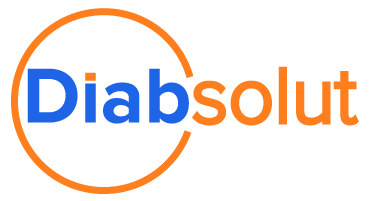Breaking Down Salesforce Revenue Cloud & ERP Integration Approach Options
Author: Rachel Chand
 Salesforce Revenue Cloud was designed to provide multiple integration options for ERPs—the easiest integration by far is with Certinia, an ERP solution built on the Salesforce platform.
Salesforce Revenue Cloud was designed to provide multiple integration options for ERPs—the easiest integration by far is with Certinia, an ERP solution built on the Salesforce platform.
Why is it the easiest option?
- The CPQ and Billing apps in Salesforce Revenue Cloud and Certinia ERP all share the same customer, product, and pricing data.
- All of the business processes from Lead to Quote, Quote to Order, and Order to Cash use the same data model,
- The user interface is the same for everyone;
- And being on the Salesforce Platform means the entire enterprise has a 360 view of their complete end-to-end business operations.
Other ERPs such as Oracle, NetSuite, SAP, WorkDay, Sage, QuickBooks can also successfully interface with Salesforce Revenue Cloud’s CPQ and Billing applications—and depending on your industry and business model, you may have requirements that dictate the best integration approach.
We understand that one size does not fit all, but based on our experience with interfacing Salesforce Revenue Cloud to multiple ERPs, there are four typical integration points:
- Interface Salesforce Billing data to the General Ledger of the ERP (the most common option)
Pros:
- Limited custom integrations.
- Assumes correct and clean data, and configurations within Salesforce and the ERP for all products, pricing, and billing-related data.
- All billing and collections processes are performed within Salesforce Billing.
- Normally less expensive and faster implementation.
- Assuming that data and processes are clean and don’t require re-engineering.
Cons:
- Normally the AR Collections processes are performed within an ERP.
- New custom reports, workflows, and list views may be required.
- Users may need to straddle two enterprise applications which could be frustrating and cause user adoption issues.
- Interface Salesforce Revenue Cloud’s Billing application to the ERP Billing/AR application.
The Sales Invoice is generated in Salesforce Billing, then interfaced to the ERP Accounts Receivable application—all related cash management activities are performed within the ERP.
Pros:
- Supports complex Revenue Recognition business needs.
- Maximizes ERP out-of-the-box Cash Management and AR collection processes.
- These ERP applications typically have more mature and robust features and functions.
- This means less customizations are needed in Salesforce Billing.
Cons:
- A second interface is required from ERP back to Salesforce billing to support the full circle invoice transaction history.
- Interface Salesforce Revenue Cloud’s CPQ application to the ERP Billing
For businesses that want their sales team to utilize Salesforce for their Lead to Quote process and then have the ERP take over the billing process. This billing interface option is typically performed for businesses that have complex billing needs such as ASC606.
- The Sales Quote is generated in Salesforce CPQ and then interfaced to the ERP quoting or sales invoicing application.
- The quote is converted to a Sales Invoice in the ERP.
- The ERP manages all complex billing requirements, recognizes revenue, and cash management and collections are all performed within the ERP.
Pros:
- Supports complex billing needs that are already engineered with out-of-the box functionality within the ERP application.
- Usually, this approach means a fast and inexpensive implementation.
Cons:
- Products and pricing must be clean and kept in sync in both Salesforce and the ERP.
- Requires an integration approach between Salesforce and the ERP for products and pricing.
- Interface Salesforce Revenue Cloud’s CPQ application to the ERP Quoting
This interface supports businesses that want their sales team to utilize Salesforce for the Lead to Quote process only—and is also typically used for businesses that have complex billing needs such as ASC606.
It has all the same pros and cons as option 3, the difference being what the integration supports.
Your business model, industry and technology will be the leading indicator of which Salesforce Revenue Cloud option or approach is best for your company—along with planning for future strategies.
Empower your organization to swiftly answer any contract or billing question by instantly connecting your Certinia ERP and other ERP systems with Salesforce Revenue Cloud. For more information about our newly expanded services, contact us now!
Search
Trending Topics
- E18: Click FSE Migration to Salesforce Field Service – Java With Sugar Podcast
- E17: The Process of Migrating from a Product That Is Retiring – Java With Sugar Podcast
- E16: Decoding FSE’s End-of-Life and Common Migration Practices – Java With Sugar Podcast
- A Dual Approach to Efficiency in Field Service Management: Asset-Centric vs. Customer-Centric Models
- E15: Trends and Limitations in AI – Java With Sugar Podcast
- Enhancing Field Service Operations with SFS-X
- E14: Our Point of View and Insights on AI – Java With Sugar Podcast
- E13: What Is Artificial Intelligence and Why Is It Beneficial for You? – Java With Sugar Podcast
- AI Ethics: What Is It and Why Does It Matter?
- 3 Tips to Improve Your Strategy and ROI When Selecting SaaS Solutions
